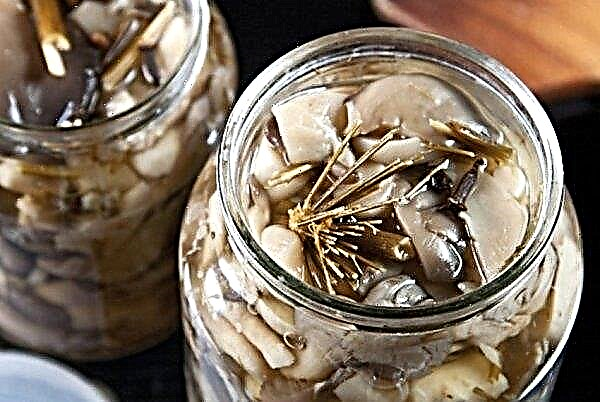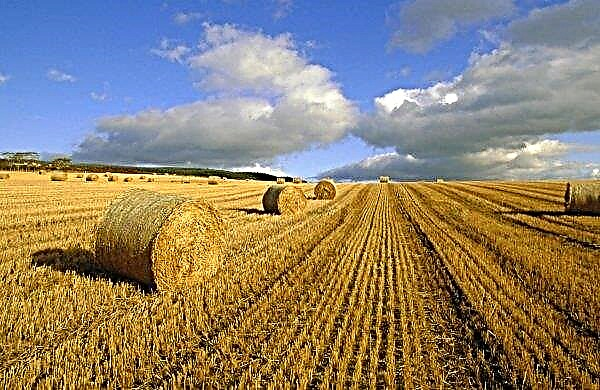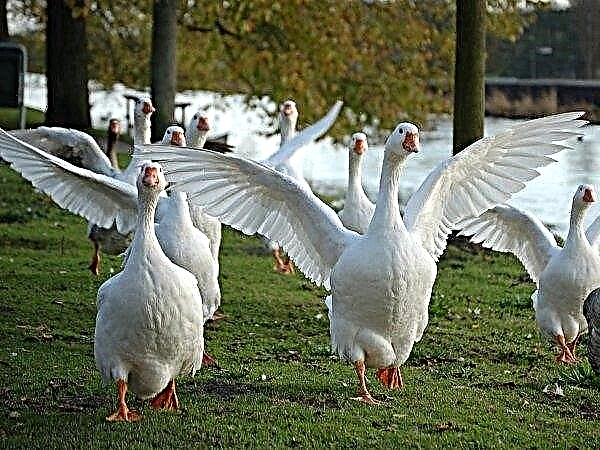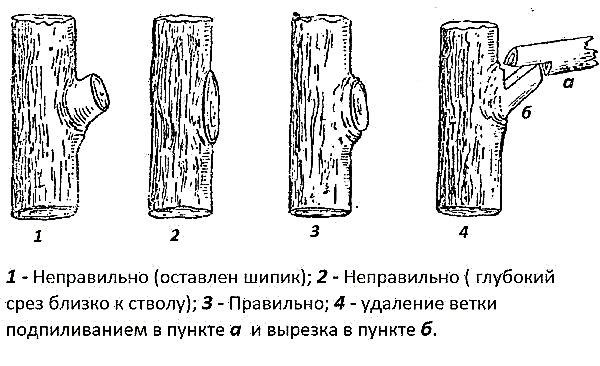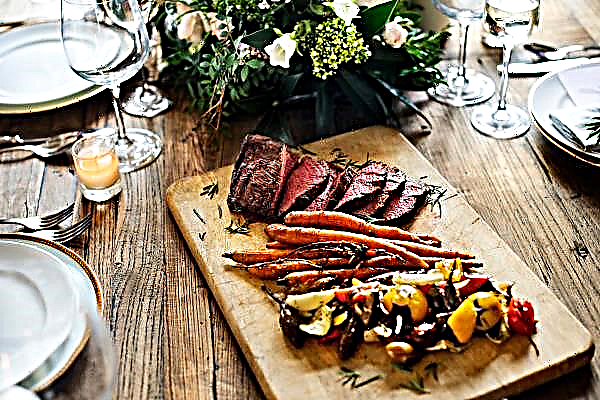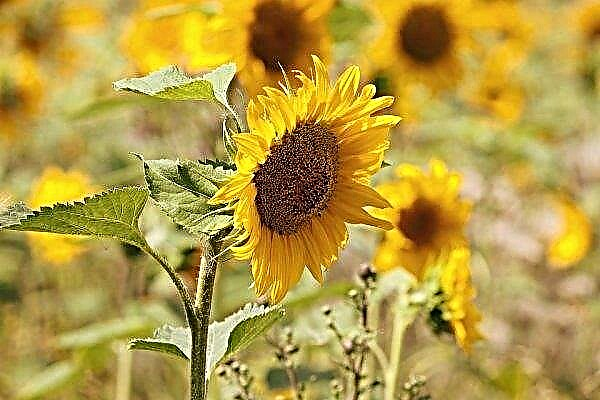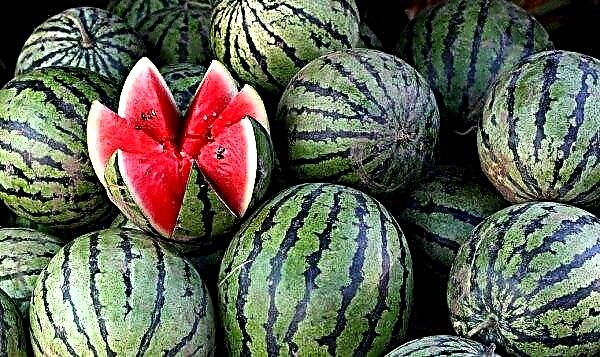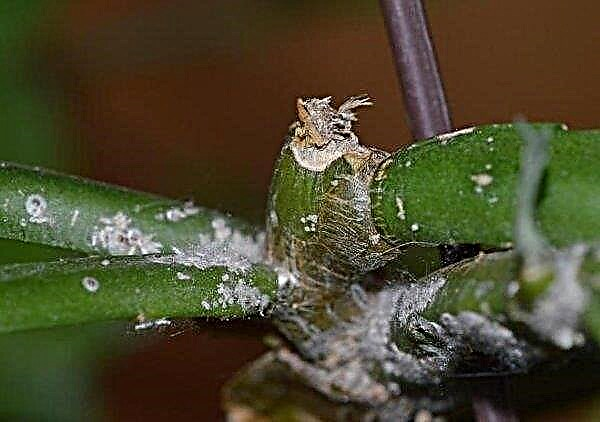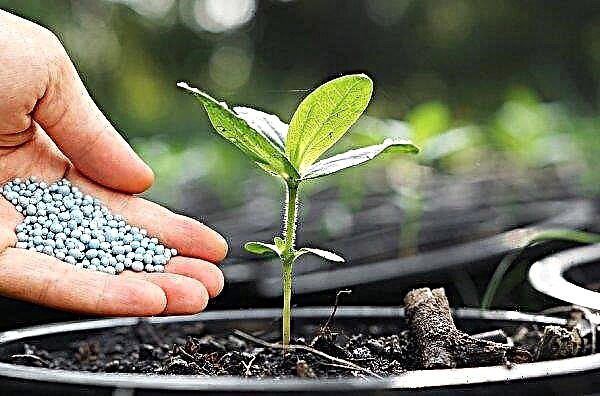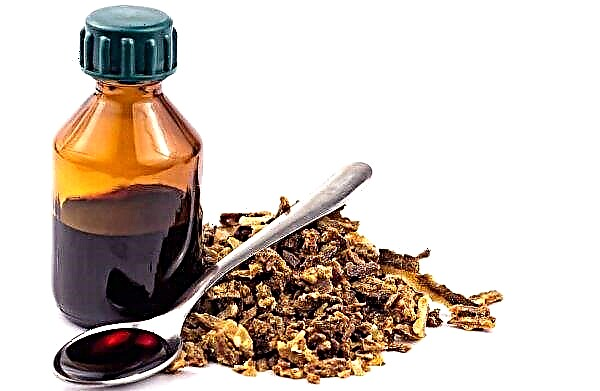Every modern housewife has fragrant black pepper in the kitchen, helping to make the taste of dishes spicy and rich. Black pepper is easy to find on sale, but you can grow it yourself in a warm room if you wish. The article discusses the botanical description of the plant, where black pepper comes from peas, the features of its planting and cultivation, as well as some mistakes that are often made by inexperienced farmers when growing this spicy spice.
Botanical Description
The scientific name of the plant from which black pepper is made is Piper Nigrum.
Did you know? Black pepper is a leader in sales among spices — About 200,000 tons of this fragrant spice are sold annually on the globe.
It belongs to the family of peppers (Piperaceae) and grows only in warm climates. Botanical description of the plant:
Botanical description of the plant:
- The length of the plant in the wild is up to 15 m. The roots are aerial, formed in nodes.
- The leaves are ovoid, leathery. Painted in gray-green color and can reach a length of 10 cm.
- The flowering period falls in late April or early May. The plant blooms and bears fruit in the second year after planting.
- Inflorescences in shape resemble long spikelets and consist of small white flowers. The length of the inflorescence is about 10 cm.
- Fruits are located on cobs with a length of up to 15 cm. They are spherical drupes with a diameter of about 5 mm, covered with a dense hard skin. One spad contains about 25 peas.
- The color of the unripe fruit is green. After full ripening, the peas turn red. Their taste is burning.
- The plant bears fruit 2 times a year for up to 50 years.
The calorie content of black pepper is 255 kcal per 100 g.
Nutritional value of the product:
- proteins - 10.95 g;
- fats - 3.26 g;
- carbohydrates - 38.31 g.
Depending on the origin, there are several varieties of black pepper, which differ in the appearance of the fruit and taste characteristics:
- malabar - It is grown on the Malabar coast, the fruits have a persistent aroma and large size, characterized by a sharp taste;
- Indonesian - grown in the province of Lamphong on the island of Sumatra, peas are medium in size and spicy in taste, and their aroma is very strong;
- Brazilian - grows on the banks of the Amazon River in the state of Para and looks unusual - the fruits are covered with a smooth, black skin, and their core is white;
- Chinese - It is grown in the south-eastern part of the country, in the province of Hainan. Peas have a characteristic light peel, and their taste is softer than other varieties of pepper;
- malaysian - it is grown in Sarawak. The fruits do not differ in such a strong aroma as other varieties, but have a very burning taste;
- ceylon - grown on the island of Sri Lanka and has a pronounced burning sharpness;
- Vietnamese - It is grown in Vietnam and is distinguished by the large size of fruits that have gray, black or brown color. Peas do not have a strong aroma, but have a burning taste.
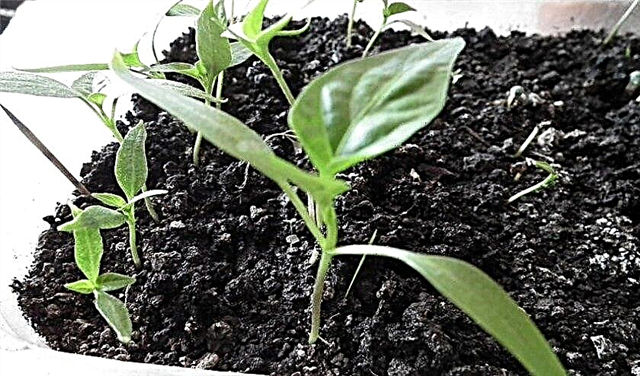
How and where does black pepper grow?
The homeland of black pepper is considered the southwestern part of India. There, this fragrant plant grows in natural conditions on the Malabar coast. It was from here that its spread around the world began. Now spice is grown in many other regions with a warm tropical climate.
Important! Malabar black pepper is considered the highest quality, since it has the largest sizes, strong aroma and burning taste.
Black pepper in the wild is a tree-like liana with numerous aerial roots that grows in forests and tightly wraps around tree trunks. For the mass cultivation of plants on plantations, special poles are used that act as a support and artificially limit the growth of the vine, allowing it to reach a length of no more than 5 m.
This is necessary so that it is more convenient to harvest the fruit. Before the fruit ripens, they are picked and dried in the sun. After this, the peas acquire a dark color, and their peel becomes wrinkled.
Is it possible to grow a plant at home?
Black pepper can grow only in regions with a warm climate and inevitably dies when the air temperature drops below + 10 ° C, so it will not work to grow it in open ground along with other crops in the summer cottage.
At home, this spice can be grown only in a warm room, providing proper care for the plant. The process of growing black pepper is not difficult, but it requires the creation of a certain microclimate in the room. If the liana is provided with comfortable conditions for growth, then over time it can reach a height of 2 m.
Preparatory work
The success of growing black pepper at home depends on the correct choice of high-quality planting material, suitable in soil composition and capacity for the plant. Let's consider each of these stages in more detail.
Features of the choice of seeds
Most often black pepper is grown from seeds, but it is difficult to find them in specialized stores. You can buy a package of black pepper peas at any grocery store and use them for sowing. Such planting material will certainly produce seedlings, since no treatments pass except drying in the sun.
Important! Granules of white, green and red pepper are not suitable for sowing. They undergo additional processing, so they will not be able to shoot.
Rules for the selection and preparation of black pepper seeds for planting:
- it is recommended to choose the freshest peas that were packed no more than 12 months ago - the fresher the planting material, the faster the seedlings will appear;
- you need to choose the largest and darkest fruits, as they are the most ripe and high-quality;
- the selected peas must be soaked in water with a temperature of +22 ... + 25 ° С for 24 hours. Poor peas will float to the surface of the water, they need to be thrown away;
- each fruit intended for planting must be treated with a growth stimulant.
Soil preparation and tanks
In the wild, black pepper grows in moist and loose soil. So that the planted seeds quickly and successfully germinate, it is recommended to use soil for planting, consisting of:
So that the planted seeds quickly and successfully germinate, it is recommended to use soil for planting, consisting of:
- 50% sheet land;
- 25% of turf land;
- 25% of river sand.
The acidity level of the resulting soil should be 5.5–6.5. Too acidic soil can add lime.
As individual containers for plants, plastic pots with several drainage holes at the bottom are suitable, they keep the soil moist longer. To avoid fluid stagnation, a layer of drainage must be laid. What is drainage made of?
For this purpose, broken clay shards, pebbles or coarse-grained sand, which is laid on the bottom of the tank, are usually used.
Sowing technology
So that black pepper sprouts faster, it is recommended to plant it in early June. After carrying out all the above preparatory steps, proceed to planting spices.
Did you know? In ancient times, small goods were weighed with black pepper granules. It was believed that 1000 large and high-quality grains of this spice weigh exactly 460 g.
Consider a step-by-step instruction of actions:
- Make a few holes about 1 cm deep on the ground. Dip 1 pea into each and sprinkle with earth.
- Lightly moisten the soil with water and cover with a film. Put the container with seeds in a well-lit and warm place (+25 ... + 28 ° С).
- If necessary, carry out moderate watering so that the earth in a container with sown seeds does not dry out. The film must be periodically lifted for ventilation.
- The first green shoots appear in 25-30 days. After this, the film is removed, and the container is placed so that the seedlings are not in direct sunlight.
- Sprouts continue to be kept at a temperature of +25 ... + 28 ° C and regularly watered with warm water. The soil in a container with seedlings should always be slightly moistened.
- When the first formed leaf grows on the sprouts, they can be transplanted into individual small pots (about 7 cm in diameter).
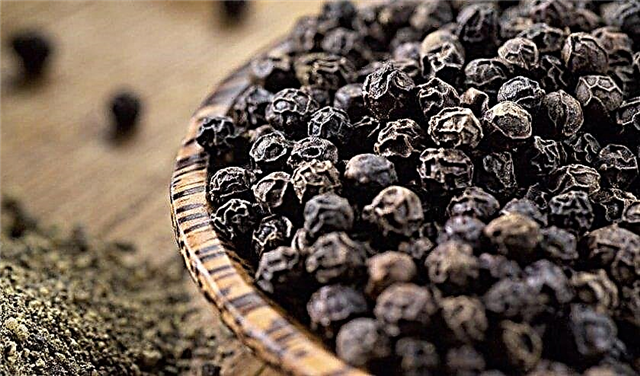
Care Features
When transplanting plants into individual pots, a loose and fertile soil mixture is prepared for them, which will give the sprouts the necessary nutrients and provide air access to the roots.
To prepare it, you need to take in equal quantities such components:
- turf land;
- sheet earth;
- humus;
- sand;
- peat.
In order for the sprouts that have appeared to grow and develop, they must be kept warm, regular watering and timely top dressing should be carried out. Such care does not require much time and effort, if you strictly adhere to certain rules. Next, we consider in more detail the intricacies of caring for the plant.
Optimal conditions
When caring for black pepper at room temperature, the main task is to create a suitable microclimate.
Conditions for the successful cultivation of spices:
- the pots should be near the window so that the plants receive enough light. In this case, seedlings must be protected from direct sunlight in order to avoid burnout of leaves. With a lack of natural light, you can use a phytolamp;
- air temperature is recommended to be maintained at + 25 ° C in summer and at least +16 ... + 18 ° C in the cold season;
- the liana needs moist air, so it is recommended to place the pot on a small tray filled with wet pebbles;
- a pot of pepper should be kept away from drafts, with a sharp drop in temperature, the plant may die;
- young plants need to be replanted annually in a new pot; for adult plants, the procedure is carried out once every 2 years. A transplant is best done in the spring;
- in a container with a sprout, it is necessary to establish a support so that a young liana entwines it and stretches to a height.

Watering
Watering black pepper is necessary taking into account the time of year. The plant needs a lot of moisture, and its growth directly depends on proper watering.
Recommendations for watering vines:
- use only warm water for irrigation;
- in spring and summer, water the liana abundantly, but only after the topsoil in the pot dries a little;
- reduce watering in the autumn a little, since during this period the plant prepares for hibernation and slows down growth;
- in winter, pour black pepper sparingly and mildly to prevent waterlogging of the soil;
- in hot weather, spray the leaves of the plant with water in the morning and evening.
Important! The plant reacts negatively to a deficit of moisture in the soil and its excess. The ground in the tank should be moderately moist.
Fertilizer application
Black pepper needs regular fertilizing. Receiving nutrients from the soil, the plant grows well and bears fruit abundantly.
Fertilizer recommendations:
- the first feeding from bird droppings is introduced after a second green leaf appears on the young sprout;
- in spring and summer, pepper is fed with a solution of prepared mineral fertilizers every 14 days;
- in winter, the liana hibernates and stops in development, so no additional feeding is necessary.

Harvesting
From the moment of flowering of the plant until harvesting the fruit, 6-8 months pass. To get peas of black pepper, the fruits of the vine need to be ripened unripe when their peel is green. Then they are carefully dried in the sun for several days.
When the peas turn dark and their peel wrinkled, the fruit is poured into a clean container with an airtight lid and stored in a dark and cool place.
Common mistakes when growing
Sometimes when grown at home, black pepper starts to hurt, and in some cases it dies. The reason for this is errors in the care of the plant, which lead to violations of the microclimate and adversely affect the development of the vine.
Common of them:
- if you place black pepper in an insufficiently lit place, its stem will stretch up, and flowering may be absent;
- in case of untimely application of fertilizers, the plant begins to drop leaves and ceases to bear fruit;
- as a result of insufficient watering or too low humidity, the ends of the leaves of black pepper turn yellow and dry;
- with excess moisture, the leaves of the creeper turn yellow, and if it is cool in the room (+16 ... + 18 ° C), chlorosis can occur;
- in direct sunlight, black pepper burns out and dries.
 Despite the fact that black pepper is used to growing in a warm tropical climate, it also survives well in room conditions. To successfully grow this exotic plant in your home, giving spicy and aromatic fruits, it is enough to adhere to the listed recommendations for caring for it.
Despite the fact that black pepper is used to growing in a warm tropical climate, it also survives well in room conditions. To successfully grow this exotic plant in your home, giving spicy and aromatic fruits, it is enough to adhere to the listed recommendations for caring for it.

